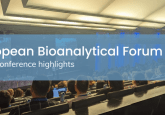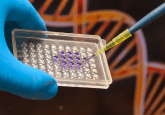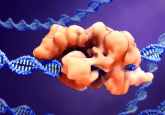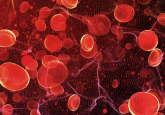The essential role of bioanalysis in AAV therapy success: an interview with Catherine Spickler and John Cook
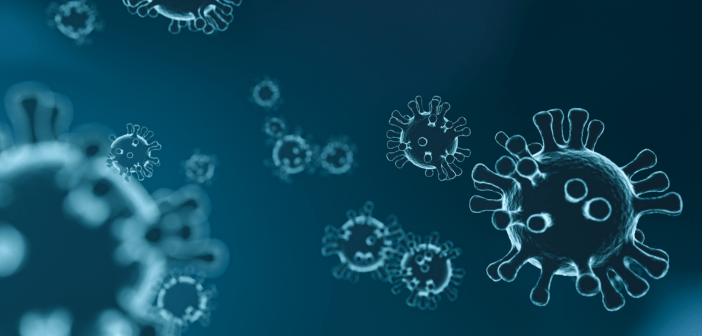
 Catherine Spickler
Catherine Spickler
Associate Director, Immunology
Charles River Laboratories
Catherine started her career in the pharmaceutical industry over 25 years ago, focusing on early drug discovery. She started her path at Charles River (MA, USA) 5 years ago as a preclinical safety Immunology Scientist specializing in molecular biology. She rapidly evolved to being one of the Immunology department Associate Directors and helped build what is now the Molecular Biology team at our Laval site in Canada. As a subject matter expert in molecular biology, she drives the scientific harmonization effort across the Charles River global organization.
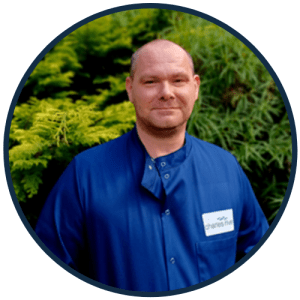 John Cook
John Cook
Senior Principal Research Scientist, Immunology, Bioanalysis & Biomarkers
Charles River Laboratories
John began his career at Charles River (MA, USA) in 2006 when his focus was on routine hematology and serum chemistry testing to support a vast array of studies in both nonclinical and clinical phases of drug development. As a subject matter expert in the field of LBA to support both TK/PK and immunogenicity endpoints, John currently drives regulatory and scientific excellence in this field at our site in Edinburgh in the UK. At a global level, John leads efforts to align and harmonize best practices in the LBA TK/PK field.
Why is bioanalytical support important within the field of AAV therapies?
Catherine: New modalities require new approaches to bioanalysis, but the development and validation of these assays have no specific FDA guidance to rely on. In the preclinical safety assessment space of AAV therapies, molecular biology plays a major role in understanding the biodistribution of the compound, as well as the expression of the delivered gene of interest.
John: AAV therapies introduce some novel challenges in regard to immunogenicity. Analytical techniques are required to monitor potential immune responses induced by either the AAV capsid or the transgene protein itself. With the high prevalence of pre-existing AAV antibodies present in both nonclinical animal models and human patients, bioanalytical methods are required to gain a full understanding of antibody status both prior to dose administration and throughout the various studies. A comprehensive analytical strategy for immunogenicity assessment is critical to understand any risks to the safety of the patients and efficacy of the therapeutic.
What are some of the main analytical techniques/platforms currently being used to develop new AAV therapies?
Catherine and John: Analytical assays include but are not limited to: qPCR for biodistribution, RT–qPCR and IHC for transgene expression, ADA and NAbs for immunogenicity, and ELISpot for cellular immune response.
What stage in the AAV therapy development pipeline do you find to be the most challenging?
John: For me, the preparation for the initial clinical trials would be the most challenging stage, in addition to setting up the various analytical techniques required to monitor patients throughout the trial. Robust assays are often required to make decisions on patient inclusion. In addition, careful planning is required to ensure appropriate sampling strategies that will enable a complete understanding of any immune response.
Is there anything we can do now to overcome these challenges? Do you think there are any stages that lack bioanalytical support?
John: I would say that preparation is key; selecting a vendor that can provide all necessary analytical support early in the planning stage will enable sufficient time to ensure robust methods are in place.
What inspires you most about your roles? Is there an achievement or accomplishment that you are particularly proud of and how has it helped contribute to the field of immunobiology?
Catherine: In the molecular biology field, assay validation has been a hot topic, especially for gene therapy products such as AAVs. I am particularly proud of the harmonization that was achieved at the Charles River global level. This ensures a quality product that is scientifically driven for our clients and aligns with the industry.
John: I am proud of the contributions I have made to change Charles River’s global strategy for the assessment of anti-drug antibodies in the nonclinical arena.
A few years ago, I was fortunate to get the opportunity to collaborate with a number of scientists from across industry as part of the European Bioanalysis Forum (Barcelona, Spain). The group reviewed existing approaches for the assessment of nonclinical immunogenicity and ultimately suggested a leaner approach that was published in 2021.
Following publication, the strategies put forward gained global traction across industry and we started to see requests from clients to adopt the approaches discussed in the publication. As a result, I encouraged our Charles River sites to embrace the leaner practices advised and lead alignment efforts to adopt a global strategy for a minimal accepted approach to nonclinical ADA assessment that will be offered to all our clients from Q3 2024.
This revised strategy does offer clients savings in respect to both time and cost, but more importantly requires a decreased sample volume to be collected, enabling less invasive sampling techniques to be considered and promoting the practices of the 3Rs.
How do you think bioanalytical testing for gene therapies will evolve in the next 5 years? Are there any innovations you are excited about?
John: I expect to see smarter workflows evolve as the industry continues to gain more experience with a wide range of gene therapies. Currently there is an understandably cautious approach to the analytical assessments required for gene therapies with assays looking to monitor all potential scenarios. I would expect to see streamlining of these analytical approaches as knowledge increases.
This interview is part of the Bioanalysis Zone Spotlight on bioanalytical support for AAV therapies. For more expert opinions on this topic, visit our feature homepage.
In association with:



